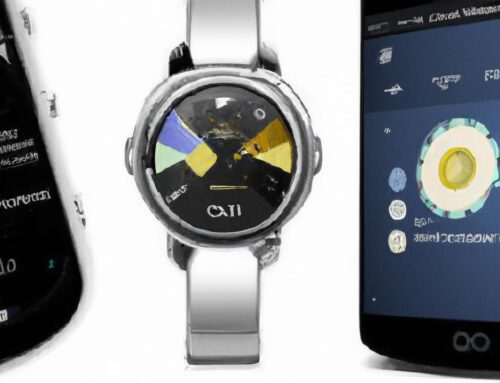In today’s digital age, learning and education are no longer confined to the walls of a traditional classroom. With the rise of mobile devices, students of all ages have the world at their fingertips, literally. From interactive educational apps to virtual field trips, the possibilities for enhancing learning through mobile devices are endless. Let’s explore how these pocket-sized gadgets are transforming the way we educate ourselves and others.
Table of Contents
- Advantages of integrating mobile devices in education
- Innovative educational apps and tools for mobile devices
- Best practices for incorporating mobile devices in the classroom
- Maximizing the potential of mobile learning applications
- Q&A
- In Retrospect
Advantages of integrating mobile devices in education
Mobile devices have revolutionized the way we learn and educate. By integrating mobile devices into educational settings, students have access to a plethora of resources and tools that enhance their learning experience. One of the main advantages of using mobile devices in education is the flexibility and convenience they offer. Students can access educational material anytime, anywhere, allowing for personalized and self-paced learning.
Furthermore, mobile devices can improve student engagement and collaboration. With the use of educational apps, students can interact with their peers and teachers in real-time, fostering a collaborative learning environment. Additionally, mobile devices enable educators to incorporate multimedia elements such as videos, interactive quizzes, and simulations into their lessons, making learning more interactive and engaging for students.
Innovative educational apps and tools for mobile devices
Mobile devices have revolutionized the way we learn and educate ourselves. With the rise of innovative educational apps and tools, students and educators have access to a wide range of resources to enhance their learning experiences. These apps and tools are not only convenient, but they also offer interactive and engaging ways to absorb and retain information.
One popular app that has been gaining traction in the education sector is Kahoot!. This interactive quiz platform allows educators to create fun and engaging quizzes for students to participate in. Another useful tool for language learning is Duolingo, which offers bite-sized lessons and interactive exercises to help users learn a new language. These apps and tools make learning more accessible and enjoyable, ultimately helping students reach their educational goals.
Best practices for incorporating mobile devices in the classroom
When incorporating mobile devices in the classroom, it is essential to establish clear guidelines and expectations for both students and teachers. By setting parameters for device usage, such as designated times for technology integration and specific tasks for which devices can be utilized, educators can ensure that the focus remains on learning objectives. Encouraging collaboration and communication through mobile devices can also enhance engagement and participation among students.
Utilizing educational apps and online resources can provide interactive and engaging activities that cater to different learning styles and abilities. By incorporating multimedia elements, such as videos, podcasts, and interactive quizzes, teachers can create dynamic and immersive learning experiences. Additionally, leveraging mobile devices for research projects and real-time information gathering can help students develop critical thinking and digital literacy skills. Overall, integrating mobile devices in the classroom can enhance educational outcomes and prepare students for the digital age.
Maximizing the potential of mobile learning applications
One way to enhance learning and education is by leveraging the power of mobile learning applications. These apps provide a convenient and accessible way for students to engage with educational content anytime, anywhere. By incorporating interactive features, personalized learning experiences, and immersive multimedia, these apps have the potential to revolutionize the way students learn and retain information.
Here are some tips for :
- Utilize gamification: Incorporate elements of gamification, such as badges, points, and leaderboards, to make learning more engaging and enjoyable.
- Encourage collaboration: Enable students to collaborate with their peers through discussion boards, group projects, and virtual study groups.
- Provide real-time feedback: Offer instant feedback on quizzes, assignments, and assessments to help students track their progress and make improvements.
Q&A
Q: How can mobile devices enhance the learning experience for students?
A: By providing access to a vast array of educational resources, interactive learning tools, and real-time feedback, mobile devices can personalize learning and make it more engaging and effective.
Q: What are some examples of mobile apps that can help students improve their skills and knowledge?
A: Apps like Duolingo for language learning, Khan Academy for math and science practice, and quiz apps for test preparation are just a few examples of how mobile devices can be used to enhance learning.
Q: How can teachers utilize mobile devices in the classroom to support student learning?
A: Teachers can use mobile devices to facilitate group collaborations, provide immediate feedback on student work, and create interactive lessons that cater to different learning styles.
Q: What are some potential challenges or drawbacks of incorporating mobile devices into education?
A: Some potential challenges include distractions, unequal access to technology, privacy concerns, and the need for teachers to receive proper training on how to effectively integrate mobile devices into their teaching practices.
Q: How can parents support their children’s learning through the use of mobile devices?
A: Parents can help monitor their children’s screen time, set boundaries for device usage, encourage them to use educational apps, and engage in conversations about what they are learning on their devices.
In Retrospect
As we continue to navigate the ever-evolving landscape of education, the integration of mobile devices holds immense potential for enhancing learning experiences. From accessing interactive resources to promoting collaboration and engagement, the possibilities are endless. Embracing technology as a tool for education not only opens up new avenues for learning, but also paves the way for a more dynamic and personalized approach to education. So, let’s seize the opportunities that mobile devices offer and continue to innovate and inspire the next generation of learners. Let us embark on this digital journey together, fueled by curiosity, creativity, and a commitment to lifelong learning.





